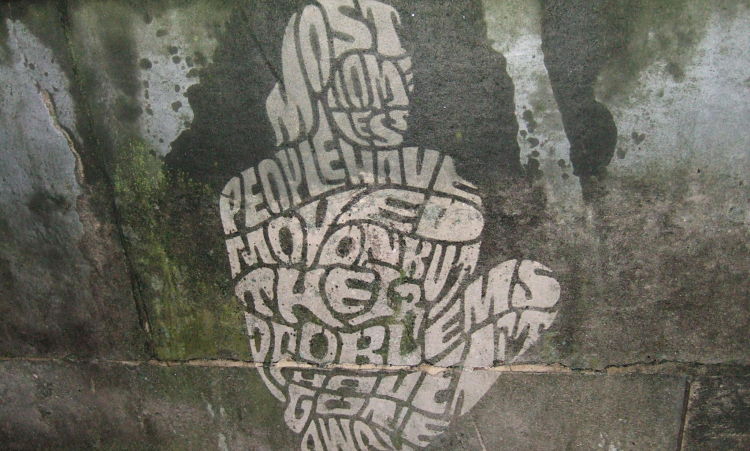Can cleaning be considered art? According to Paul Curtis a.k.a. “Moose”, it is. Reverse graffiti, a technique of cleaning away dirt and grime to leave environment-friendly and temporary images behind on anything from sidewalks to car windows, is a rising art form recognized globally.
Also known as clean tagging, grime writing, green graffiti, and clean advertising, this practice of removing waste and dirt to create an image is being facilitated by artists and advertisers alike. It has even lured the attention of legal authorities, but given the benign nature of reverse graffiti, it is difficult to peg as “cleaning is not illegal.”
British artist Moose, the founder and creator of reverse graffiti, discovered this technique after being inspired while working as a dishwasher. After searching for a way to make a powerful statement without the stigma or disrespect for the law that comes with traditional graffiti and street art which leaves behind a chemical mark, the idea of reversing the effect came to mind.
To quote the artist from one of many promotional videos, “I make pictures by cleaning…I am a professor of dirt.” Perhaps his most famous work, The Reverse Graffiti Project, was set on the Broadway Tunnel in San Francisco in the spring of 2008 as an advertisement for Green Works, a company trying to promote their plant-based cleaner in a resourceful and biodegradable way. His work has been found around the world on a wide array of surfaces.
As more of a controversial approach to reverse graffiti, Brazilian artist Alexandre Orion was accosted by authorities after discovering his piece known as “Skulls” in Sao Paolo in 2006. The piece was meant to be a harrowing message and reminder of the destructive impact of exhaust fumes left behind by the automobiles that would reliably drive past the transport tunnel on their daily commutes. Once the officers realized the artist had used nothing but water and a cloth to create the image, they could no longer make an arrest, or give the artist a charge of any kind. Instead they had no choice but to clean the entire tunnel themselves.
Reverse graffiti has been used commercially by companies including Microsoft, BBC, and Smirnoff. However in the Netherlands a permit is needed in order to use this method of advertisement, but it remains a legal grey area in most of the world.
This technique brings to mind a controversial question: can cleaning really be considered breaking the law? Or is it the spread of unwarranted ideas that causes a legal stir? Nevertheless, it is an inspirational form of art that should be encouraged and perhaps could lead to a cleaner environment if more people started to notice just how dirty our world is and instead used it as a canvas rather than expecting someone else to clean the mess up, or ignore it entirely.
For more about reverse graffiti click it
For more info about Moose click it
Check out videos of The Reverse Graffiti Project and Moose:
–





